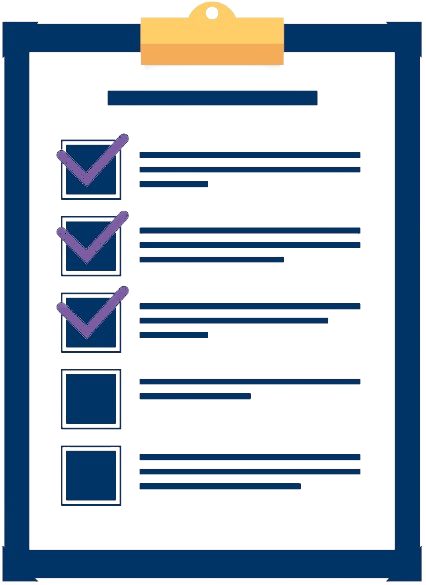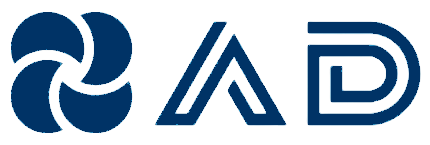Suggestions based on the Question and Answer that you are currently viewing
How can investors using the primary T-bill market be assured that their bid will be accepted? Why do large corporations typically make competitive bids rather than noncompetitive bids for T-bills? (LO1)
What is meant by the term faying surface?
1. : How do you feel about having a manager’s responsibilities in today’s world, which is characterized by social, technological, and other sudden changes in the environment? Describe some skills and competencies that are important to managers working in these conditions.
Identify which basic principle of accounting is best described in each item below. (a) Norfolk Southern Corporation reports revenue in its income statement when the performance obligation is satisfied instead of when the cash is collected. (b) Yahoo! recognizes depreciation expense for a machine over the 2-year period during which that machine helps the company earn revenue. (c) Oracle Corporation reports information about pending lawsuits in the notes to its financial statements. (d) Eastman Kodak Company reports land on its balance sheet at the amount paid to acquire it, even though the estimated fair value is greater.
How would financial accelerator effects (see section 19.4) affect the DAD curve?
The interest rate on a one-year loan can be decomposed into a one-year risk-free (free from default risk) component and a risk premium that reflects the potential for default on the loan in that year. A change in economic conditions can affect the risk-free rate and the risk premium. The risk-free rate is usually affected by changing economic conditions to a greater degree than the risk premium. Explain how a weaker economy will likely affect the risk-free component, the risk premium, and the overall cost of a one-year loan obtained by (1) the Treasury, and (2) a corporation. Will the change in the cost of borrowing be more pronounced for the Treasury or for the corporation? Why? (LO2)
How can earnings management affect the quality of earnings?
Assume there are just two firms (X and Y) and they are considering which of two alternative prices to charge. The decisions are made simultaneously: i.e. without either firm knowing the choice of its rival. The various profits are illustrated in the following pay-off matrix: (a) What is firm Y’s best response to each of the different prices firm X could charge? Does firm Y have a dominant strategy? (b) What is firm X’s best response to each of the different prices firm Y could charge? Does firm X have a dominant strategy? (c) What is/are the Nash equilibrium/equilbria? What is the most likely outcome of this game? Explain your answer.
Suppose the net income generated by a bank is equal to 1.5 percent of its assets. Based on past experience, would the bank experience a loss or a gain? Explain. (LO2)
Explain why the use of residual income for performance evaluation provides better incentives, in some ways, than ROI, but still causes managers to make some decisions that could be harmful to an organisation in the long run.
] Fergie has the choice between investing in a State of New York bond at 5 percent and a Surething Inc. bond at 8 percent. Assuming that both bonds have the same nontax characteristics and that Fergie has a 30 percent marginal tax rate, in which bond should she invest?
Assume the following conditions. The last time the FOMC met, it decided to raise interest rates. At that time economic growth was very strong, so inflation was relatively high. Since the last meeting, economic growth has weakened, and the unemployment rate will likely rise by 1 percentage point over the quarter. The FOMC’s next meeting is tomorrow. Do you think the FOMC will revise its targeted federal funds rate? If so, how? (LO4)
Using the information from BE19-2, assume this is the only difference between Oxford’s pretax financial income and taxable income. Prepare the journal entry to record the income tax expense, deferred income taxes, and income taxes payable, and show how the deferred tax liability will be classified on the December 31, 2014, balance sheet.
Is a current-year net operating loss of a C corporation available to offset income from the corporation in other years? Explain.
1. As an administrator for a medium sized hospital, you and the board of directors have decided to change the business from a short-term, acute-care facility to a drug dependency hospital. How would you go about executing this strategy?
At a recent management meeting at Skyward Industries, the Transport Division manager was heard to say “this transfer pricing is a waste of time – at the end of the year all the internal transactions are eliminated on consolidation in the financial reports”. Comment on this statement.
1. : Experts say that for teams to function well, members must get to know one another in some depth. What specifically would you do to facilitate this when team members are located together? What about in a global virtual team?
The value of the dollar is monitored by bond market participants over time. a. Explain why expectations of a weak dollar could reduce bond prices in the United States. b. On some occasions, news of the dollar’s weakening has not had any impact on the bond markets. Assuming that no other information offsets the weakening dollar, explain why the bond markets may not have responded to the dollar’s decline. (LO2)
When considering C corporations, the IRS checks to see whether salaries paid are too large. In S corporations, however, it usually must verify that salaries are large enough. Account for this difference.
List possible sources of additional paid-in capital.
Bart is the favorite nephew of his aunt Thelma. Thelma transferred several items of value to Bart. For each of the following transactions, determine the effect on Bart’s gross income:
Assume that on January 1, 2014, Elmer’s Restaurants sells a computer system to Liquidity Finance Co. for $680,000 and immediately leases the computer system back. The relevant information is as follows. 1. The computer was carried on Elmer’s books at a value of $600,000. 2. The term of the noncancelable lease is 10 years; title will transfer to Elmer. 3. The lease agreement requires equal rental payments of $110,666.81 at the end of each year. 4. The incremental borrowing rate for Elmer is 12%. Elmer is aware that Liquidity Finance Co. set the annual rental to insure a rate of return of 10%. 5. The computer has a fair value of $680,000 on January 1, 2014, and an estimated economic life of 10 years. 6. Elmer pays executory costs of $9,000 per year. Instructions Prepare the journal entries for both the lessee and the lessor for 2014 to reflect the sale and leaseback agreement. No uncertainties exist, and collectibility is reasonably certain.
Kobestrongly dislikes SUVs and is appalled that so many are on the road. He proposes to eliminate the federal income tax and replace it with a $50,000 annual tax per SUV. Based on the number of SUVs currently owned in the United States, he estimates the tax will generate exactly the amount of tax revenue currently collected from the income tax. What is wrong with Kobe’s proposal? What type of forecasting is Kobelikely using?
The financial statements of P&G are presented in Appendix 5B. The company’s complete annual report, including the notes to the financial statements, can be accessed at the book’s companion website, www. wiley.com/college/kieso. Instructions Refer to P&G’s financial statements and the accompanying notes to answer the following questions. (a) What criteria does P&G use to classify “Cash and cash equivalents” as reported in its balance sheet? (b) As of June 30, 2011, what balances did P&G have in cash and cash equivalents? What were the major uses of cash during the year? (c) P&G reports no allowance for doubtful accounts, suggesting that bad debt expense is not material for this company. Is it reasonable that a company like P&G would not have material bad debt expense? Explain.
How would marginal utility and market demand be affected by a rise in the price of a complementary good?
The benefits of buying with AnswerDone:

Access to High-Quality Documents
Our platform features a wide range of meticulously curated documents, from solved assignments and research papers to detailed study guides. Each document is reviewed to ensure it meets our high standards, giving you access to reliable and high-quality resources.

Easy and Secure Transactions
We prioritize your security. Our platform uses advanced encryption technology to protect your personal and financial information. Buying with AnswerDone means you can make transactions with confidence, knowing that your data is secure

Instant Access
Once you make a purchase, you’ll have immediate access to your documents. No waiting periods or delays—just instant delivery of the resources you need to succeed.
